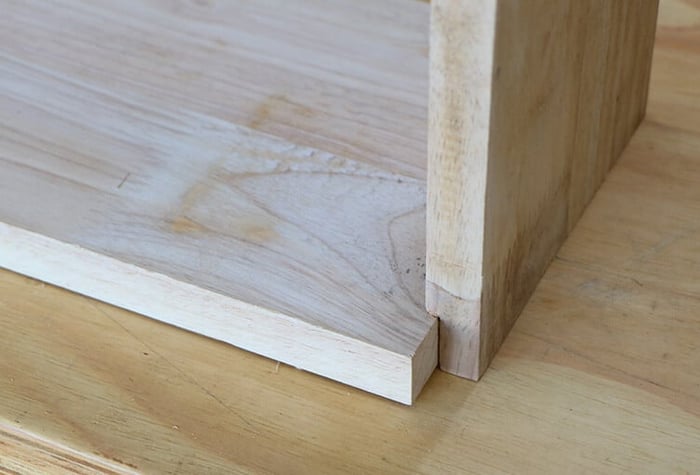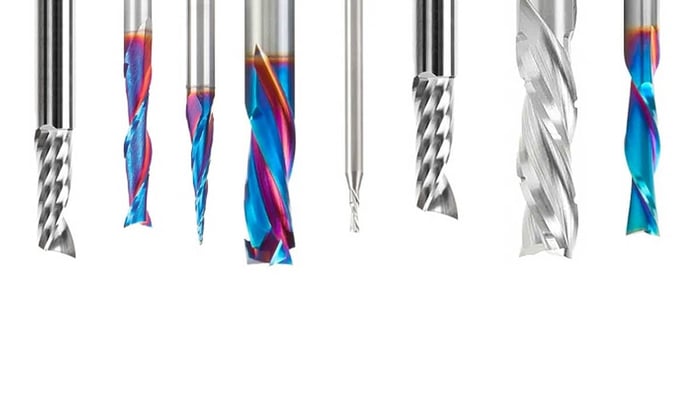
Optimize Your Small Wood Shop Layout
Setting up a small wood shop can be a rewarding and fulfilling experience, but it requires careful planning and organization.
In this guide, we will take you through the essential steps to create a functional and safe workspace. From assessing your space and planning the layout to choosing the right tools and equipment, we will cover everything you need to know to set up a small wood shop.
Let's dive in and get started on building the workshop of your dreams!
Step 1: Assess Your Space
When setting up your small wood shop, the first crucial step is to assess your space thoroughly to determine its dimensions, identify any obstacles that may affect your layout, and prioritize safety considerations.
Understanding the space dimensions allows you to plan the placement of equipment, workstations, and storage solutions effectively. By taking into account the available space, you can maximize efficiency and workflow within your shop. Overcoming obstacles such as structural limitations or irregular layouts may require creative solutions like utilizing vertical storage or implementing mobile workstations.
Safety measures, such as proper lighting, ventilation, and ergonomic design, play a vital role in creating a safe and productive woodworking environment. Implementing these elements ensures a well-optimized layout for woodworking efficiency.
What Are the Dimensions of Your Space?
In determining the dimensions of your small wood shop, it's essential to consider the layout of your woodworking station, adhere to shop safety standards, implement efficient space planning, and incorporate effective workshop organization.
By carefully assessing the available space, you can optimize the positioning of your tools and equipment to enhance workflow and productivity. Proper space planning allows for smooth movement within the shop and minimizes clutter.
When organizing your workshop, categorizing tools based on their usage frequency can further streamline your work processes. Ensuring that safety measures are prioritized in the layout design can prevent accidents and create a conducive working environment.
These principles of space utilization and shop layout are fundamental in creating a functional and safe woodworking space.
What Are the Obstacles in Your Space?
Identifying obstacles in your small wood shop involves assessing tool accessibility, setting up work areas efficiently, ensuring proper shop lighting, optimizing ventilation, and embracing a compact workshop design.
Limited tool accessibility can hinder productivity, but organizing tools on wall-mounted racks or in mobile carts with Systainers can maximize space utilization. Place larger, heavier tools on mobile bases.
Inadequate lighting can strain your eyes and impact precision work; consider installing task lighting or LED strips for bright, focused illumination.
Ventilation issues may lead to poor air quality and health risks, so incorporating an air filter and dust extractor will improve circulation.
A compact workshop design promotes efficient workflow by incorporating multi-functional workstations and utilizing vertical storage solutions to make the most out of limited space.
What Are the Safety Considerations?
Prioritizing safety considerations in your small wood shop involves regular tool maintenance, implementing essential shop safety measures, securing a sturdy woodworking bench, and ensuring the safe usage of shop tools.
Maintaining your tools plays a crucial role in preventing accidents and ensuring their optimal performance. Regular inspection and upkeep of tools help in identifying any potential hazards, such as loose parts or dull blades, before they cause harm. Safety measures such as wearing appropriate protective gear, following proper operating procedures, and keeping a clutter-free workspace are essential for accident prevention.
A reliable woodworking bench provides a stable and spacious work surface, reducing the risk of accidents caused by unstable or inadequate work areas. Remember, a safe shop is a productive shop!
Step 2: Plan Your Layout
Planning the layout of your small wood shop requires careful consideration of the workshop layout, implementing a compact shop design, ensuring easy tool accessibility, optimizing workspace utilization, and designing a functional layout.
One key aspect to focus on when planning the workshop layout is the efficient utilization of space. By strategically organizing your tools and machinery, you can create a smooth workflow and prevent unnecessary clutter.
Consider creating designated zones within the shop for different tasks to streamline your work process. Another important factor to keep in mind is the safety aspect - ensure that aisles are wide enough for easy movement and that emergency exits are clear.
By taking these factors into account, you can create a productive and efficient work environment.
What Are Your Work Areas?
Defining work areas in your small wood shop involves creating dedicated woodworking spaces, implementing space-saving solutions, and maximizing workspace utilization for optimal productivity.
By clearly defining areas such as a cutting station, assembly area, finishing zone, and tool storage section, you can efficiently organize your workflow and eliminate clutter. Utilizing wall-mounted shelves, pegboards, and overhead storage units can help free up valuable floor space and keep tools within easy reach. Incorporating mobile workbenches and collapsible tables can further optimize your workspace, allowing for flexibility in layout depending on the project at hand. Efficiently utilizing every inch of available space not only enhances productivity but also fosters a safer and more organized work environment in your wood shop.
What Are Your Storage Needs?
Assessing your storage needs in a small wood shop involves identifying suitable solutions for tool storage, organizing shop storage efficiently, accommodating ongoing woodworking projects, and implementing effective dust collection systems.
Proper tool storage is essential not only for keeping your workspace organized but also for ensuring the safety and longevity of your tools. By investing in quality tool chests, wall-mounted racks, or custom storage cabinets, you can maximize space utilization and easily access your tools when needed.
Efficient shop storage solutions, such as pegboards, rolling carts, and overhead storage racks, can further streamline your workspace and create a more productive environment for your woodworking projects.
Prioritizing dust collection through dust collectors, air filtration systems, and proper ventilation helps maintain a cleaner, healthier workspace and enhances the overall quality of your projects.
What Are Your Power Requirements?
Determining your power requirements for a small wood shop involves selecting appropriate power tools, organizing hand tools effectively, ensuring optimal tool selection, and arranging tools strategically for efficient workflow.
When setting up your small wood shop, the right power tools can make a significant difference in the quality and speed of your work. Investing in high-quality power tools that match your specific woodworking needs is crucial for achieving precise cuts and efficient operations.
Organizing your hand tools efficiently not only saves time but also minimizes clutter, creating a safer working environment. By strategically arranging your tools within easy reach, you can streamline your workflow and avoid unnecessary disruptions, ultimately enhancing productivity in your wood shop.

Step 3: Choose Your Tools and Equipment
Selecting tools and equipment for your small wood shop involves choosing the right woodworking tools, setting up equipment efficiently, prioritizing tool maintenance, and establishing an effective woodworking setup.
To ensure that your woodworking tools are suitable for your projects, consider the type of work you'll be doing regularly.
Essential tools like a quality table saw and router are indispensable for a well-rounded wood shop.
Investing in reliable measuring tools such as a tape measure, square, and calipers can significantly enhance precision in your woodworking tasks.
Properly setting up your equipment by calibrating alignment, adjusting blade heights, and maintaining clean workspaces can optimize your workflow and project outcomes.
What Are the Essential Tools for a Small Wood Shop?
Identifying essential tools for a small wood shop is crucial for enhancing workshop efficiency, maintaining an organized shop environment, and optimizing the overall setup for streamlined woodworking operations.
- Tools such as a table saw and routerare fundamental for accurate cutting, shaping, and joining of wood pieces.
- A sturdy workbench provides a stable surface for various tasks, while clamps help secure materials in place during intricate woodworking processes.
- Having a selection of hand tools like chisels, planes, and measuring devices like a tape measure and combination square is vital for fine detailing and precision work.
Proper storage solutions such as tool chests, wall cabinets, and shelving units also play a significant role in maintaining a clutter-free and efficient workspace.
What Are the Safety Equipment Needed?
Ensuring the availability of essential safety equipment in a small wood shop is essential to promote workshop safety, facilitate ergonomic design principles, and optimize workspace utilization for a secure and productive woodworking environment.
- Proper safety gear, such as safety goggles, ear protection, dust masks, and fire extinguishers, are crucial to safeguard against potential hazards in the workshop.
- Incorporating ergonomic design features like adjustable workbenches and anti-fatigue mats not only enhances comfort but also reduces the risk of injuries due to poor posture or repetitive motions.
- By utilizing space-saving storage solutions and efficient layout designs, the workshop can be organized effectively without compromising safety measures, allowing for smooth workflow and improved productivity.
Step 4: Organize Your Space
Organizing your small wood shop involves embracing a compact design philosophy, prioritizing efficient tool storage solutions, maximizing workshop efficiency, and maintaining a well-organized shop environment.
By integrating space-saving techniques like utilizing vertical storage options such as wall-mounted racks and cabinets, you can make the most of limited space. Implementing a clutter-free layout and labeling systems for tools and supplies help streamline workflow and save time searching for items. Consider investing in multi-functional workbenches with built-in storage compartments to keep essential tools within reach while optimizing surface area. Scheduling regular cleaning sessions and decluttering tasks can prevent workspace congestion and enhance overall productivity in your woodworking area.
How to Maximize Storage in a Small Wood Shop?
Maximizing storage in a small wood shop entails integrating efficient shop lighting solutions, optimizing ventilation systems, and implementing strategic woodworking space planning to enhance storage capacity and workflow efficiency.
Proper lighting in a small wood shop is crucial for creating a bright and well-lit workspace. Consider installing overhead LED lights or task lighting to illuminate work areas effectively and prevent shadows. Adequate ventilation is also essential to maintain air quality and regulate temperature, especially when working with wood dust and fumes.
Strategically planning your woodworking spaces by utilizing wall-mounted shelves, vertical storage solutions, and mobile carts can help maximize storage capacity without cluttering the shop. These practical tips can significantly improve the functionality and organization of your small wood shop.
How to Create Efficient Work Areas?
Creating efficient work areas in a small wood shop involves organizing workshop tools strategically, optimizing shop arrangement for workflow efficiency, and maintaining woodshop organization to support seamless woodworking operations.
Optimizing the setup of workshop tools is crucial in streamlining tasks and enhancing productivity. By strategically placing tools like saws, drills, and sanders based on frequency of use and accessibility, woodworkers can eliminate unnecessary movements, saving time and effort.
Arranging the shop layout with a focus on workflow efficiency ensures that each station flows smoothly into the next, reducing downtime and increasing output. Emphasizing woodshop organization further enhances efficiency by keeping work areas clutter-free, materials easily accessible, and tools well-maintained for a conducive working environment.
How to Keep Your Space Clean and Organized?
Maintaining a clean and organized space in a small wood shop is essential for an efficient woodshop setup, optimizing woodworking space usability, and enhancing overall shop productivity for successful project completion.
One practical tip to enhance the cleanliness and organization of your wood shop is to designate specific areas for different woodworking tasks. By creating designated stations for cutting, sanding, assembly, and finishing, you can streamline your workflow and reduce clutter. Implementing a system for storing tools and materials, such as wall-mounted racks, labeled bins, or drawer organizers, can help maintain a tidy workspace. Regularly decluttering unused items and disposing of scrap wood can further contribute to a more efficient and organized shop setup.
Step 5: Safety Considerations
Prioritizing safety considerations in a small wood shop involves ensuring appropriate shop lighting, optimizing ventilation for a safe working environment, securing a reliable woodworking bench, and implementing essential shop safety measures.
- Effective shop lighting not only enhances visibility but also reduces the risk of accidents due to poor visibility. Well-lit workspaces are crucial for accurate cuts and safe handling of tools.
- A proper ventilation system is essential to reduce exposure to sawdust and fumes, ensuring a healthier environment for woodworkers.
- A sturdy woodworking bench provides stability for various tasks, preventing potential injuries.
- Strict adherence to safety measures such as wearing protective gear and maintaining a clutter-free workspace is vital for a secure woodworking environment.
What Are the Safety Measures for Using Power Tools?
Implementing safety measures for using power tools in a small wood shop involves setting up a dedicated woodworking area, prioritizing shop safety protocols, and integrating safety features into the woodshop layout to prevent accidents and ensure a secure working environment.
By organizing tools in a logical and accessible manner, woodworkers can minimize the risk of tripping hazards and improve overall efficiency. Ensuring ample lighting and ventilation in the woodshop enhances visibility and maintains air quality. Labeling storage areas for tools and materials contributes to a clutter-free workspace. Incorporating emergency shut-off switches and installing proper dust collection systems are crucial steps to enhance safety and mitigate potential risks associated with woodworking activities. Regular maintenance of tools and equipment is essential for optimal performance and safe operation within the woodshop.
What Are the Safety Measures for Handling Wood and Other Materials?
Practicing safety measures for handling wood and other materials in a small wood shop involves optimizing equipment setup, maximizing space utilization for material handling efficiency, and designing a safe woodworking layout to prevent accidents and promote a secure working environment.
Ensuring that tools such as table saws and routers are properly calibrated and blades are aligned before use is crucial for safe woodworking practices. It is important to always wear appropriate personal protective equipment, including safety glasses and ear protection, to minimize the risk of injuries.
When arranging the layout of your small wood shop, consider creating designated zones for different woodworking tasks to streamline workflow and reduce clutter. Maintaining a clean and organized workspace not only enhances safety but also improves overall productivity in the workshop.
What Are the Emergency Procedures in Case of Accidents?
Establishing emergency procedures in case of accidents in a small wood shop involves incorporating woodworking space planning strategies, organizing workshop tools efficiently, and securing proper shop tool storage practices to ensure swift and effective response to emergencies.
An essential aspect of woodworking space planning is to ensure that there are clear pathways and unobstructed exits within the shop, allowing easy access to emergency equipment and exits in case of accidents. Setting up workshop tools in a logical and ergonomic layout can prevent potential hazards and minimize the risk of accidents. Securing shop tool storage is crucial for quick access to safety gear, fire extinguishers, and first aid kits, enabling immediate response to any unforeseen incidents.
Frequently Asked Questions
What are the key considerations when laying out a small wood shop?
Some key considerations include available space, functionality, safety, and workflow. It's important to plan the layout carefully to make the most of your small space and create a safe and efficient working environment.
How do I determine the best layout for my small wood shop?
The best layout will depend on your specific needs and the size and shape of your space. Consider factors such as the types of projects you will be working on, the equipment and tools you will need, and any specific safety or workflow requirements.
What tools and equipment are essential for a small wood shop?
This will vary depending on the types of projects you will be working on, but some essential tools for a small wood shop include a table saw, miter saw, drill press, router, and sanders. You may also need hand tools such as chisels, hammers, and hand saws.
How can I maximize space in a small wood shop?
There are several ways to maximize space in a small wood shop. Consider using multi-functional tools, such as a table saw with built-in router capabilities. You can also utilize wall and ceiling space for storage, and invest in space-saving equipment or tools.
What safety precautions should I take when setting up a small wood shop?
Safety is crucial in any woodworking shop, especially in a small space. Make sure to have proper ventilation and lighting, keep your tools and equipment in good working condition, and always wear protective gear. It's also important to have a fire extinguisher on hand and to keep your shop clean and free of clutter.
Can I change the layout of my small wood shop in the future?
Yes, you can always make changes to the layout of your small wood shop as your needs and projects evolve. It's a good idea to have a flexible layout that can be easily adjusted to accommodate new tools or equipment. Just make sure to carefully plan and consider safety and functionality when making changes.





